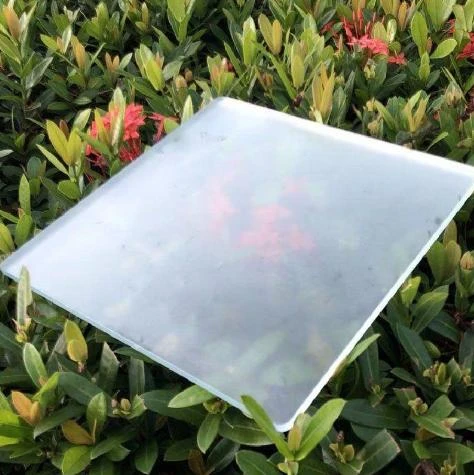Understanding Float Glass Definition and Significance
Float glass is a significant material used widely in various architectural and industrial applications. It is a type of flat glass produced through the float glass process, which was invented in the mid-20th century. This innovative technique involves floating molten glass on top of molten tin, creating a smooth, even surface that is both aesthetically pleasing and functionally versatile.
The float glass process begins with the melting of raw materials, which typically include silica sand, soda ash, and limestone, at high temperatures. The molten glass is then poured onto a bath of molten tin. Since glass is less dense than tin, it floats on top, resulting in a sheet of glass that has a uniform thickness and a flawless surface. This method eliminates the need for grinding and polishing the glass after production, ensuring that it is ready for use in a variety of applications.
Understanding Float Glass Definition and Significance
In addition to its clarity, float glass can also be treated or coated to enhance its properties. Various treatments can improve its thermal insulation, reflection, and ultraviolet (UV) protection abilities. For instance, low-emissivity (Low-E) coatings help reduce heat loss, making float glass an energy-efficient choice for modern buildings. These coatings reflect heat back into the room during winter while keeping excessive heat out during summer, thus contributing to energy savings and sustainability.
float glass meaning
The versatility of float glass extends to its availability in various thicknesses and sizes, allowing it to be customized for specific applications. It is used not only in architecture but also in the automotive industry, furniture design, and even electronics. In vehicles, for example, float glass is used for windows and windshields to provide clarity and safety. In furniture design, it is used in tables and shelving for a contemporary look while maintaining structural integrity.
Furthermore, float glass is 100% recyclable, making it an environmentally friendly choice. The recycling process involves melting down scrap glass, which can then be remolded into new glass products. This reduces waste and the demand for raw materials, contributing to a more sustainable manufacturing cycle. Many industries are increasingly adopting recycled float glass to minimize their carbon footprint, aligning with global efforts toward sustainability.
Another crucial aspect of float glass is its safety features. Although it is fragile, it can be manufactured into different forms, such as tempered and laminated glass, which enhance its strength and safety. Tempered glass is treated to withstand greater impact, while laminated glass consists of layers that hold together even when shattered, reducing the risk of injury.
In conclusion, float glass is a vital material that significantly impacts modern architecture and industry. Its clarity, versatility, and sustainability make it a popular choice for a wide array of applications. As technology advances, innovations in float glass production are likely to emerge, enhancing its properties even further and reinforcing its importance in various sectors. Whether in designing stunning facades or ensuring safer vehicles, float glass will continue to play a critical role in shaping our built environment.
 Afrikaans
Afrikaans  Albanian
Albanian  Amharic
Amharic  Arabic
Arabic  Armenian
Armenian  Azerbaijani
Azerbaijani  Basque
Basque  Belarusian
Belarusian  Bengali
Bengali  Bosnian
Bosnian  Bulgarian
Bulgarian  Catalan
Catalan  Cebuano
Cebuano  Corsican
Corsican  Croatian
Croatian  Czech
Czech  Danish
Danish  Dutch
Dutch  English
English  Esperanto
Esperanto  Estonian
Estonian  Finnish
Finnish  French
French  Frisian
Frisian  Galician
Galician  Georgian
Georgian  German
German  Greek
Greek  Gujarati
Gujarati  Haitian Creole
Haitian Creole  hausa
hausa  hawaiian
hawaiian  Hebrew
Hebrew  Hindi
Hindi  Miao
Miao  Hungarian
Hungarian  Icelandic
Icelandic  igbo
igbo  Indonesian
Indonesian  irish
irish  Italian
Italian  Japanese
Japanese  Javanese
Javanese  Kannada
Kannada  kazakh
kazakh  Khmer
Khmer  Rwandese
Rwandese  Korean
Korean  Kurdish
Kurdish  Kyrgyz
Kyrgyz  Lao
Lao  Latin
Latin  Latvian
Latvian  Lithuanian
Lithuanian  Luxembourgish
Luxembourgish  Macedonian
Macedonian  Malgashi
Malgashi  Malay
Malay  Malayalam
Malayalam  Maltese
Maltese  Maori
Maori  Marathi
Marathi  Mongolian
Mongolian  Myanmar
Myanmar  Nepali
Nepali  Norwegian
Norwegian  Norwegian
Norwegian  Occitan
Occitan  Pashto
Pashto  Persian
Persian  Polish
Polish  Portuguese
Portuguese  Punjabi
Punjabi  Romanian
Romanian  Russian
Russian  Samoan
Samoan  Scottish Gaelic
Scottish Gaelic  Serbian
Serbian  Sesotho
Sesotho  Shona
Shona  Sindhi
Sindhi  Sinhala
Sinhala  Slovak
Slovak  Slovenian
Slovenian  Somali
Somali  Spanish
Spanish  Sundanese
Sundanese  Swahili
Swahili  Swedish
Swedish  Tagalog
Tagalog  Tajik
Tajik  Tamil
Tamil  Tatar
Tatar  Telugu
Telugu  Thai
Thai  Turkish
Turkish  Turkmen
Turkmen  Ukrainian
Ukrainian  Urdu
Urdu  Uighur
Uighur  Uzbek
Uzbek  Vietnamese
Vietnamese  Welsh
Welsh  Bantu
Bantu  Yiddish
Yiddish  Yoruba
Yoruba  Zulu
Zulu 

